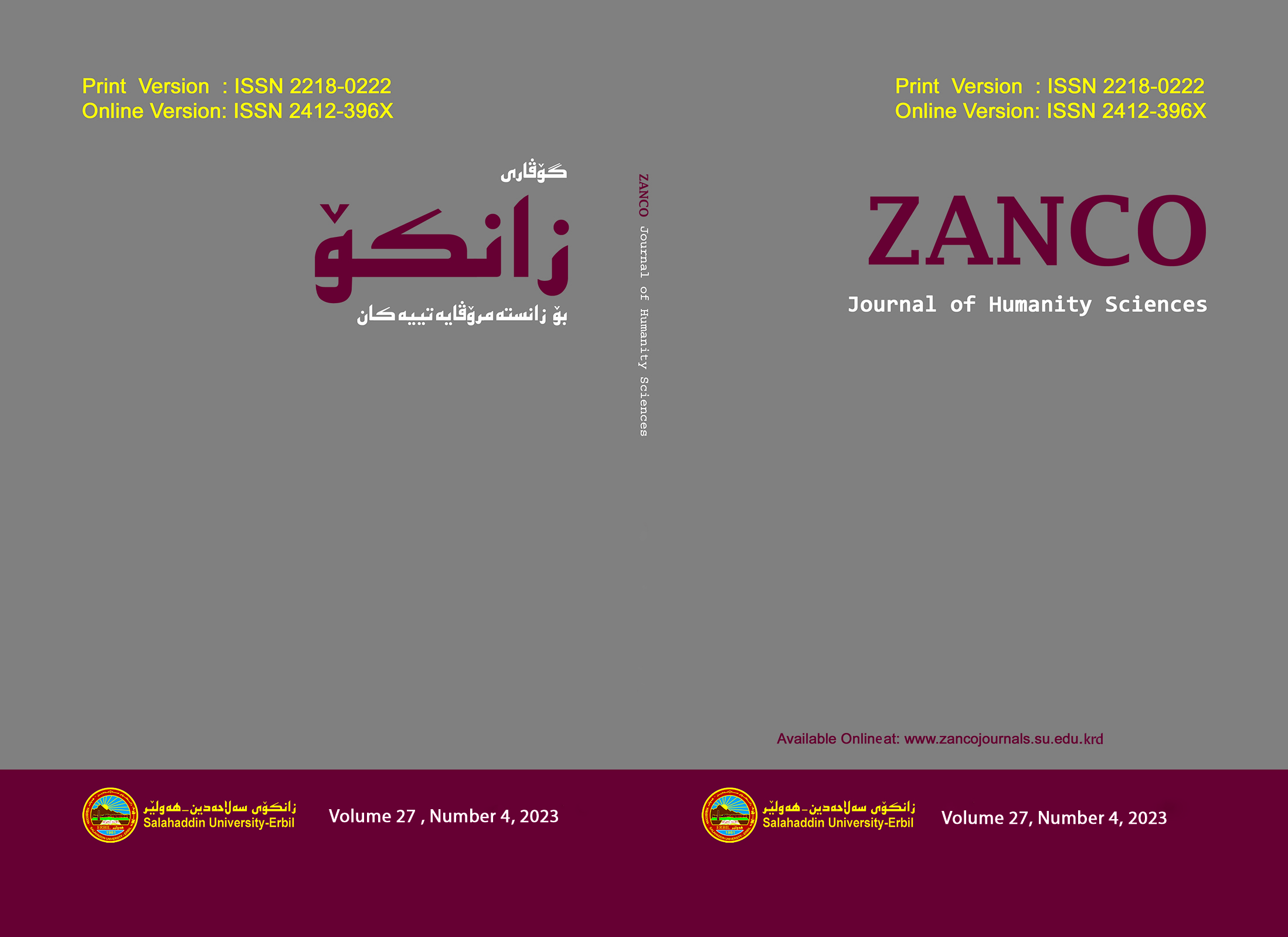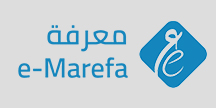The role of Situational and Cultural Variables on Kurdish EFL Learners’ Willingness to Communicate in English
DOI:
https://doi.org/10.21271/zjhs.27.4.19Keywords:
Willingness to communicate (WTC), Situational Variables, Cultural Variables, EFL learnersAbstract
Willingness to communicate (henceforth, WTC) is an individual’s preparedness to voluntarily communicate with a particular individual or individuals in a specific context, using the target language. The present mixed-method study investigates Kurdish EFL learners’ WTC in English in the learning environment, particularly the role of situational and cultural variables. This study set out to identify the variables which foster or impede learners’ WTC in English so that language teachers can promote or control the variables within the classroom to optimize learners’ WTC in English. Quantitative and qualitative data were collected from 3rd year English majors employing a semi-structured questionnaire and an observation scheme. Analysis of data demonstrated that situational, cultural, psychological, and linguistic variables influenced learners' WTC in the learning environment. Findings lend support to the complex nature of WTC as an array of variables was found to underlie learners’ WTC in English. Finally, the findings gave rise to pedagogical suggestions for language educators, with particular reference to the implications of teaching Kurdish students in an EFL classroom environment.
References
• Ahmed, N. F., 2016. An Exploration of Speaking Anxiety with Kurdish University EFL Learners. Journal of Education and Practice, 7(27), 99-106. [Online]. Available at: https://www.semanticscholar.org/paper/An-Exploration-of-Speaking-Anxiety-with-Kurdish-EFL-Ahmed/5252ce7a91e5e07aed74db07292da3f57ca138ce (Accessed: 5 January 2022).
• Aydın, F., 2017. Willingness to Communicate (WTC) among Intermediate-level Adult Turkish EFL Learners: Underlying Factors. Journal of Qualitative Research in Education, 5(3), 109-137. doi: 10.14689/issn.2148-2624.1.5c3s5m
• Baran-Łucarz, M. and Klimas, A., 2020. Developing 21st Century Skills in a Foreign Language Classroom: EFL Student Teachers’ Beliefs and Self-Awareness. Academic Journal of Modern Philology, 10, pp.23-38. doi: 10.34616/ajmp.2020.10
• Bolarinwa, O. A., 2015. Principles and methods of validity and reliability testing of questionnaires used in social and health science researches. Nigerian Postgraduate Medical Journal, 22(4), 195-201. doi: 10.4103/1117-1936.173959
• Cao, Y., & Philp, J., 2006. Interactional context and willingness to communicate: A comparison of behavior in whole class, group and dyadic interaction. System, 34(4), 480-493. doi: 10.1016/j.system.2006.05.002
• Cao, Y., 2011. Investigating situational willingness to communicate within second language classrooms from an ecological perspective. System, 39(4), 468-479. doi: 10.1016/j.system.2011.10.016
• Dörnyei, Z. (2005). The psychology of the language learner: Individual differences in second language acquisition. Semantic Scholar [Online]. Available at: https://www.semanticscholar.org/ (Accessed: 10 October 2022).
• Dörnyei, Z. (2007). Research methods in applied linguistics. Oxford: Oxford University Press.
• Eddy-U, M., 2015. Motivation for participation or non-participation in group tasks: A dynamic systems model of task-situated willingness to communicate. System, 50, 43-55. doi: 10.1016/j.system.2015.03.005
• Hamasaid, H., Soleimani, H., & Hamamorad, A., 2021. Reticence and Willingness to Communicate to Predict Daily Class Participation Among Iranian and Iraqi-Kurdistan Kurdish EFL Learners. Research in English Language Pedagogy, 9(1), 159-181. [Online]. Available at: https://www.academia.edu/68057756/Reticence_and_Willingness_to_Communicate_to_Predict_Daily_Class_Participation_Among_Iranian_and_Iraqi_Kurdistan_Kurdish_EFL_Learners (Accessed: 15 February 2022).
• Kang, S. J., 2005. Dynamic emergence of situational willingness to communicate in a second language. System, 33(2), 277-292. doi: 10.1016/j.system.2004.10.004
• Lahuerta, A. C., 2014. Factors affecting willingness to communicate in a Spanish university context. International Journal of English Studies, 14(2), 39-55. doi: 10.6018/j.193611
• MacIntyre, P. D., & Charos, C., 1996. Personality, attitudes, and affect as predictors of second language communication. Journal of language and social psychology, 15(1), 3-26. doi: 10.1177%2F0261927X960151001
• MacIntyre, P. D., Clément, R., Dörnyei, Z., & Noels, K. A., 1998. Conceptualizing willingness to communicate in a L2: A situational model of L2 confidence and affiliation. The Modern Language Journal, 82(4), 545-562. doi:10.1111/j.1540-4781.1998.tb05543.x
• McCroskey, J.C., Richmond, V.P., 1987. Willingness to communicate. In: McCroskey, J.C., Daly, J.A (Eds.), Personality and Interpersonal Communication. Beverly Hills: Sage, pp. 129–156.
• Mhamad, A., A.(2015). How Kurdish Education Neglects Homegrown Experiences of the Peoples of Kurdistan. [Online]. Available at: https://yourmiddleeast.com/2015/05/20/how-kurdish-education-neglects-homegrown-experiences-of-the-peoples-of-kurdistan/ (Accessed: 11 November 2022)
• Pattapong, K. (2010). Willingness to communicate in a second language: A qualitative study of issues affecting Thai EFL learners from students' and teachers' point of view. PhD thesis. University of Sydney.
• Peng, J. E., 2012. Towards an ecological understanding of willingness to communicate in EFL classrooms in China. System, 40(2), 203-213. doi:10.1016/j.system.2012.02.002
• Phung, L., 2017. Task preference, affective response, and engagement in L2 use in a US university context. Language Teaching Research, 21(6), 751-766. doi:10.1177%2F1362168816683561
• Riasati, M. J., & Rahimi, F., 2018. Situational and individual factors engendering willingness to speak English in foreign language classrooms. Cogent Education, 5(1), 1-15. doi:10.1080/2331186X.2018.1513313
• Singer, E., & Couper, M. P., 2017. Some methodological uses of responses to open questions and other verbatim comments in quantitative surveys. Methods, data, analyses: a journal for quantitative methods and survey methodology, 11(2), 115-134. doi:10.12758/mda.2017.01
• Sofi- Karim,M. (2015). English Language Teaching in the Kurdistan Region of Iraq. M.A. thesis. Webster University.
• Triandis, H. C. (2001). Individualism and Collectivism. New York: Routledge.
• Wen, W. P., & Clément, R., 2003. A Chinese conceptualization of willingness to communicate in ESL. Language culture and curriculum, 16(1), 18-38. doi:10.1080/07908310308666654
Downloads
Published
How to Cite
Issue
Section
License
Copyright (c) 2023 Thikra Abdulqader Mohammed , Fatimah R. Hasan Al Bajalani

This work is licensed under a Creative Commons Attribution-NonCommercial-ShareAlike 4.0 International License.
Except where otherwise noted, content on this site is licenced
under a Creative Commons Attribution License 4.0 (CC BY- 4.0)










